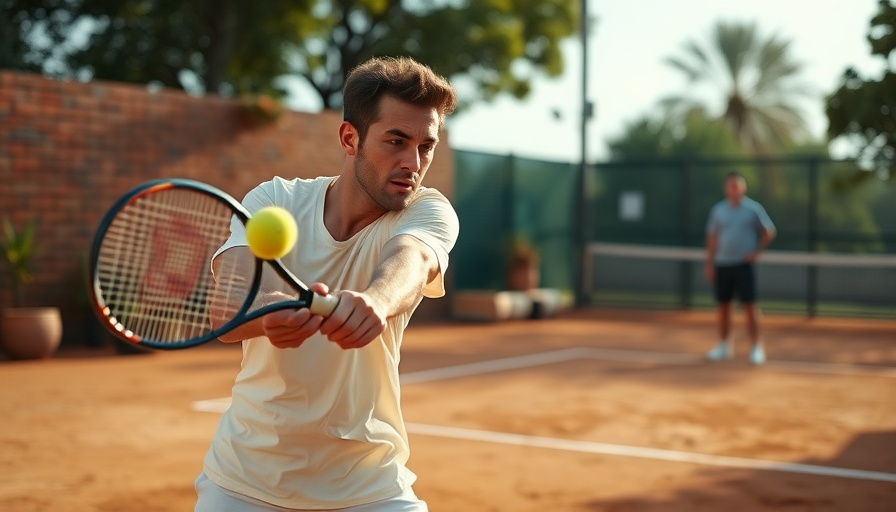
Unleashing Power and Spin in Your Game
In fast-paced racket sports like tennis and pickleball, the advice to go full power while incorporating spin can feel intimidating. However, this technique not only enhances your performance but also opens your game to strategic advantages. The ability to hit the ball with both speed and angle is crucial for any competitive player. Balancing these elements requires an understanding of stance, swing technique, and body movement.
In 'Never hold back on this shot 💥', the discussion dives into how players can combine power and spin for a more effective game, exploring key insights that sparked deeper analysis on our end.
The Science of Spin: How It Works
When a player adds spin to their shots, particularly topspin or slice, they can control the trajectory and impact of the ball significantly. A well-executed topspin shot descends rapidly after crossing the net, making it challenging for opponents to return. This is why the video 'Never hold back on this shot 💥' emphasizes aiming for a combination of speed, angle, and spin, rather than just pure power in one-dimensional shots. Efficiently utilizing these elements can catch opponents off-guard and create openings.
Mastering the Open Stance
The concept of maintaining an open stance during play cannot be understated. An open stance allows for a broader range of movement, enabling players to transition smoothly between different shots. It gives you the leverage needed to generate spin while keeping your body balanced, setting the stage for better court coverage and strategic execution. Think about your footwork: moving your legs is just as vital as swinging your racket. Great players often attribute their agility on the court to their stance and body position.
The Importance of Strategic Angles
As mentioned in the discussed video, hitting with a great angle can be more effective than simply hitting the ball at high speed. A shot that hits the court at an angle can create a tougher return for your opponent, forcing them into defensive positions. This approach improves your overall game quality, as opponents struggle to anticipate and respond to your varied shots, leading them to make mistakes.
Bringing It All Together: Tips to Enhance Your Game
Every player can benefit from refining their technique. Here are a few actionable insights:
- Practice Spin: Set aside practice time dedicated to perfecting your spin shots. Start slowly, focusing on form before increasing your power.
- Work on Footwork: Enhancing your footwork will allow you to practice your open stance effectively. Incorporate drills that focus on lateral movements and balance.
- Focus on Angles: When practicing, experiment with angled shots and observe the differing impacts these shots have on your practice partner.
In essence, don't shy away from hitting hard, but also remember to incorporate skillful techniques such as spin and angled shots. The fusion of power and control will evolve your gameplay, making you not only a more formidable opponent but also a more strategic player.
For those looking to elevate their game, incorporating these techniques can be crucial. Remember, greatness on the court is a balance of raw power and honed skill - and mastering this has the potential to redefine your match outcomes.
 Add Row
Add Row  Add
Add 




Write A Comment